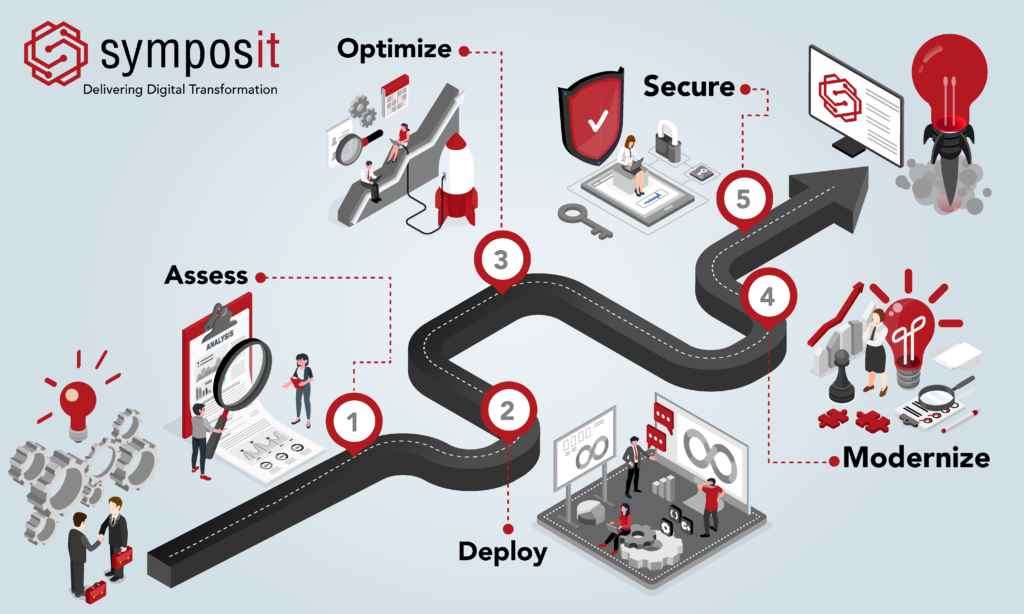
Introduction:
As the DoD strives to maintain its competitive edge in an ever-evolving security landscape, addressing technical debt and modernizing legacy systems, particularly disparate and siloed ones, becomes paramount. To effectively tackle this complex challenge, DoD can adopt the Assessing, Deploying, Optimizing, Modernizing, and Securing (ADOMS) framework. By following this structured methodology, the DoD can methodically pay off technical debt, streamline operations, and modernize legacy systems while ensuring security and sustainability.
Assessing Legacy Systems:
The initial step of the ADOMS framework is a comprehensive assessment of existing legacy systems. This involves identifying technical debt, evaluating system functionality, analyzing integration capabilities, and assessing security vulnerabilities. By conducting a thorough evaluation, the DoD can gain a clear understanding of the scope and complexity of the technical debt and legacy system challenges it faces.
Deploying Interim Solutions:
While assessing legacy systems, it is crucial to deploy interim solutions to address immediate operational needs. This step involves implementing temporary measures to mitigate risks and improve system functionality. These short-term solutions can include process optimizations, software patches, or infrastructure upgrades to bridge critical gaps and enhance the performance of legacy systems.
Optimizing System Efficiency:
The next phase of the ADOMS framework focuses on optimizing the efficiency of legacy systems. This step involves streamlining workflows, eliminating redundancies, and automating manual processes wherever possible. By optimizing system efficiency, the DoD can unlock productivity gains, reduce operational costs, and improve the overall effectiveness of its operations.
Modernizing Legacy Systems:
To overcome the challenges posed by disparate and siloed systems, the DoD must prioritize the modernization of its legacy systems. This step involves a holistic approach that encompasses updating technology infrastructure, leveraging cloud computing, adopting modern software development practices, and embracing emerging technologies like artificial intelligence and advanced analytics. Modernizing legacy systems enables seamless data integration, interoperability, and improved decision-making capabilities across various branches, agencies, and defense contractors.
Securing Systems and Data:
Security is a critical aspect of any modernization effort. In the ADOMS framework, securing systems and data is an integral part of the process. The DoD must implement robust cybersecurity measures, conduct regular security audits, and establish proactive threat detection and response mechanisms. By adopting a comprehensive security strategy, the DoD can safeguard its sensitive information, networks, and infrastructure against cyber threats.
Conclusion:
The ADOMS framework provides a structured and systematic approach for the Department of Defense to address technical debt and modernize its legacy systems, particularly those that are disparate and siloed. By following the steps of Assessing, Deploying, Optimizing, Modernizing, and Securing, the DoD can efficiently pay off technical debt, streamline operations, and embrace modern technologies while ensuring the security and long-term sustainability of its systems. As the DoD continues to adapt to emerging challenges, the ADOMS framework serves as a guiding methodology to maintain its strategic advantage and effectively respond to evolving threats in the dynamic global landscape.




